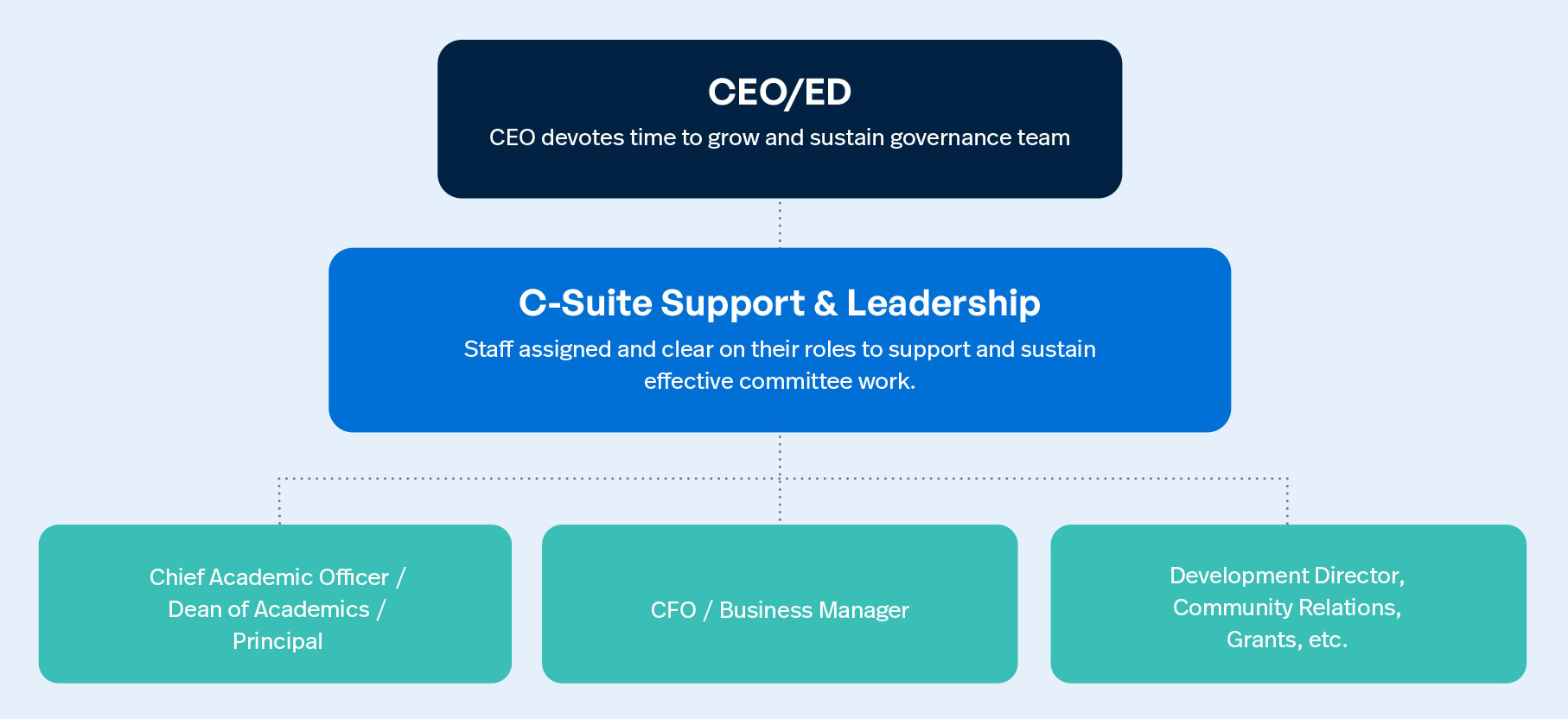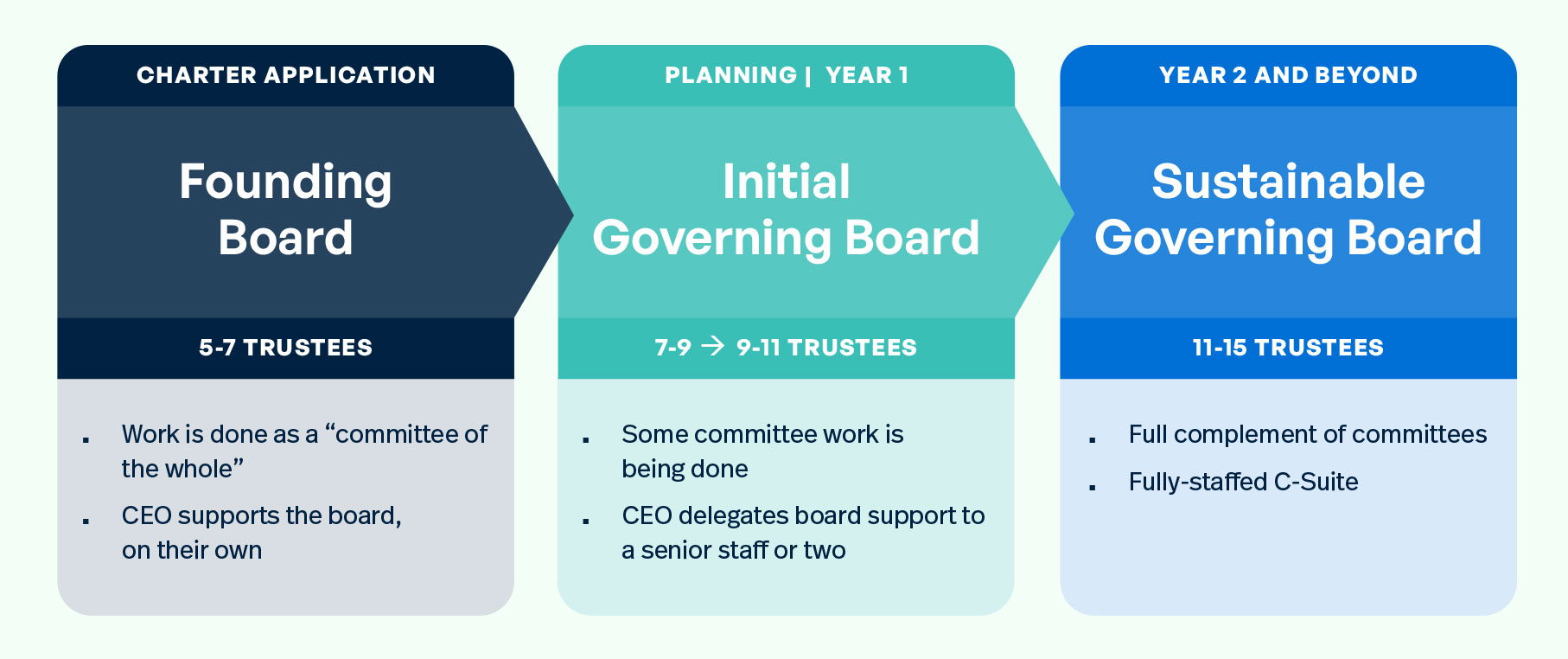
Resource Guide
Recruit and Manage Your Board: The Charter School Board Governance Guide
Learn the essential roles and responsibilities of your governance board, as well as how to govern for growth at every stage.
Download Full Guide for FreeCharter School Governance as a Team Sport
Charter school governance is a team sport. Like the offensive and defensive units of a sports team, board members and managers have different strengths and responsibilities, but everyone is focused on the same goal: the success of your organization. To achieve this goal, it’s essential for the board team (led by the chair), and the management team (led by the CEO or executive director), to work collaboratively and develop a supportive, constructive relationship. By working together, they can create a shared vision of excellence, establish near-term goals, and develop realistic plans for the future.

Board Governance Team
Like the players on any athletic team, everyone on your board governance team knows what position they’re playing, including where their roles and responsibilities begin and end.
For example, board members can feel accountable for fulfilling the work they have agreed to do while at the same time resisting any impulse to micromanage. In addition to the chair, the board comprises voting trustees, including committee chairs, as well as non-voting committee members.
The best board members are people who work well on a team, in addition to the other skills and areas of expertise they bring to the group. Committee chairs should also have an inherent sense of boundaries—they’ll establish the right protocols for interacting with staff and help committee members navigate the tricky role of working directly with C-suite managers. C-Suite or Management Team On the management side, the CEO/ED is supported by senior managers who lead the day-to-day functioning of the school and drive to execute the vision of the board.
For example, a school’s chief financial officer, budget director, or business manager should work closely with both the board and the CEO/ED on financial oversight. All of these individuals—paid staff members and volunteer trustees—make up a charter school’s governance team and play a central role in its stability and growth.

Governing for Growth
Governing for growth means different things for different schools. Some schools aspire to become charter management organizations with multiple locations in several states. Others are committed to serving a single community by adding grade levels, academic programs, a new facility, or services through partner organizations. No matter what your growth path looks like, make sure that the board has bought into it. Regardless of your organizational aspirations, the C-suite and the board should work together to develop a vision of excellence.
How will you meet or exceed your charter’s promises to your community? Then, continue to partner to develop and achieve near-term and long-term goals that map toward that vision of success.

Success Story
See Success StoriesSTARS Charter School
STARS partnered for money to run their school. They were able to embark upon building projects with minimal disruptions to their thriving programs. With the new, improved space, STARS has been able to dramatically increase enrollment.
View Case Study
Need money to run your school?
Get Started- Talk to a real person
- Get qualified in minutes
- Fund your school